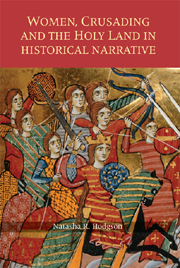7 - Widows
from PART II
Published online by Cambridge University Press: 12 September 2012
Summary
Widows and Medieval Society
DURING the medieval period, life expectancy was relatively low because of disease, epidemics, warfare and poor medical care; thus the death of a marriage partner was common. Amongst the aristocracy, male life expectancy was curtailed by their traditional military role – ‘because noblemen were warriors and thus subject to violent death, women could expect to be married more than once’. It has been estimated that 46 per cent of aristocratic men in England who survived past the age of fifteen during the late medieval period died violently. Even where death was not linked specifically to the battlefield, sustained military campaigns led to high mortality through starvation and diseases such as dysentery. Traditional noble activities such as hunting and jousting could also prove fatal. Lower down the social scale, Bennet estimates that single women (often widows) in rural English society held 10 to 15 per cent of all village holdings. She describes a rudimentary model of marriage which lasted approximately twenty years, ending in the death of a partner, with widows seemingly living on for an average of up to a decade or more.
In medieval thought, the widow was perceived as quintessentially female, but she often had to act in a masculine way. Her control of property meant that she was more ‘visible’ in official documents than other women, whether in charters selling or donating property, in endowments to the Church, or in wills.
- Type
- Chapter
- Information
- Women, Crusading and the Holy Land in Historical Narrative , pp. 197 - 235Publisher: Boydell & BrewerPrint publication year: 2007



